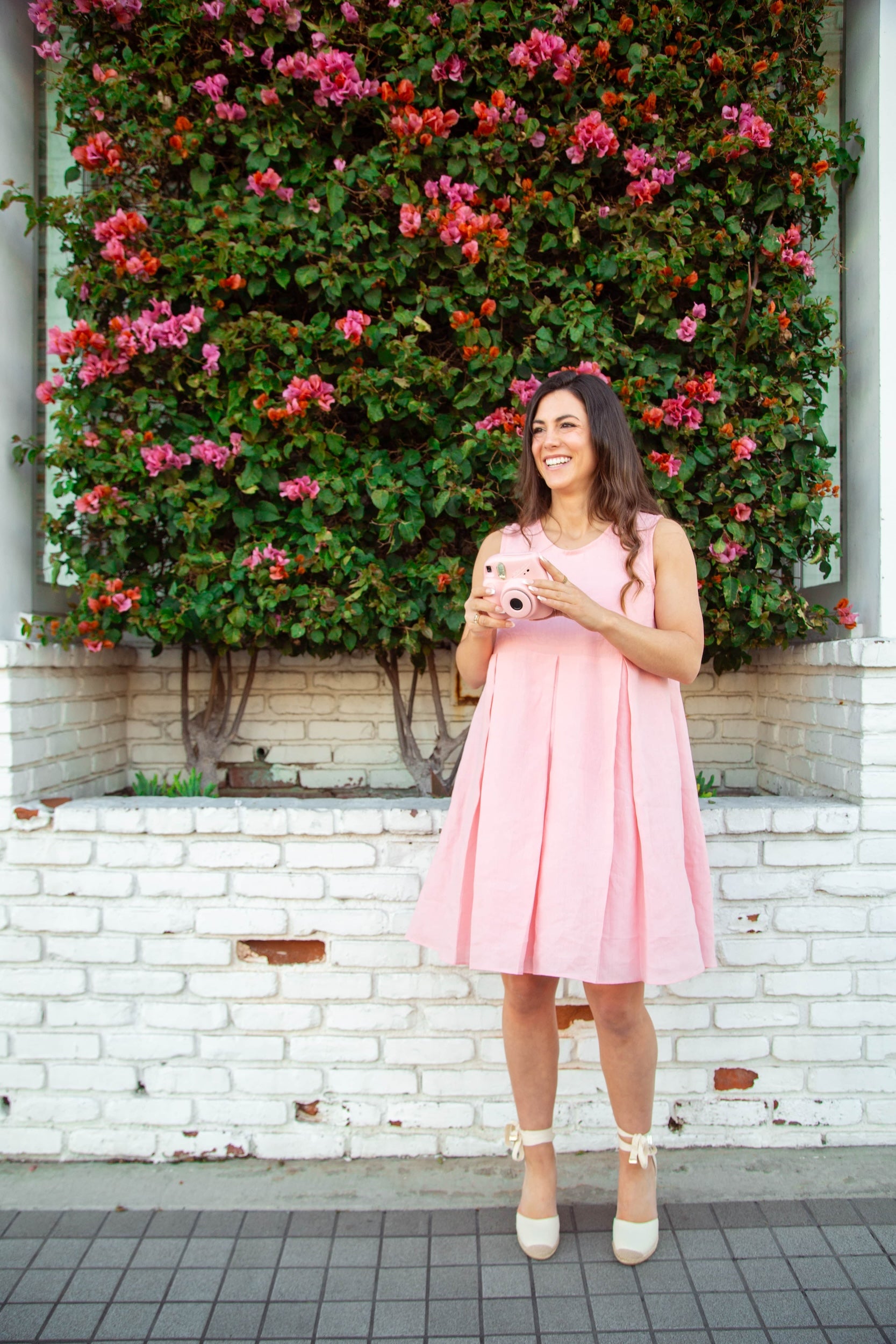What is Slow Fashion? | Why I believe in the slow fashion model

Hi everyone, it’s Emily!
Before launching my brand, I was part of the fast fashion problem. I purchased way too many clothes that I wore once and then got rid of by throwing them out or giving them to secondhand clothing shops. This cycle of buying and tossing started to get to me. Fashion didn’t really feel as meaningful. It felt empty. I didn’t treasure my clothes or have memories and stories behind my wardrobe.
Since I had this revelation I have embraced slow fashion in my own life and in my brand. I want to share this concept with you because it changed my perspective on consuming and on fashion. In this blog, I am going to explain what slow fashion is and why it is better for you personally, as well as the world.
So let’s get started!
What is slow fashion?
Slow fashion is the widespread reaction to fast fashion. It’s thoughtful, intentional, and holistic. It’s also an argument for hitting the brakes on excessive production, overcomplicated supply chains, and mindless consumption.
Slow Fashion is an awareness and approach to fashion, which considers the processes and resources required to make clothing, particularly focusing on sustainability. It involves buying better quality garments that will last longer and will value fair treatment of people and the planet. Slow fashion is quality based vs time based.
It encourages slower production, unifies sustainability with ethics, and ultimately invites consumers to invest in well made and lasting clothes.
Slow fashion brands produce clothing in-house or locally, allowing for full control over the supply chain process and labor conditions. There’s no rush to scale quickly or create items to please the masses. This not-so-new take on the industry infuses value into every seam, lining, and fold of a hand crafted garment.
Why is slow fashion good for you and the world?
Once you learn to thoughtfully purchase pieces you will have for a lifetime, conveniently, you’ll also save money.
Fast fashion corporations spit new collections on sales floors almost every week, and less than one percent of all clothing materials are recycled into new garments. Slow fashion upturns this practice. With slower production schedules, small batch collections, and zero waste designs, slow fashion brands aim to reduce the textile waste filling our landfills. Instead of chasing trends, slow fashion brands utilize enduring styles with layering options and create classic and versatile pieces. Without chasing trends, slow fashion encourages customers to build smaller wardrobes and invest in garments that they keep for a lifetime.
How to join the slow fashion movement
The brand and consumer have to work together to make an impact. Slow fashion combines a brand’s practices with a customer’s shopping habits. If you are a consumer it means buying less. That may be surprising coming from someone with a fashion business, but even from a designers perspective, I don’t create for the sole purpose of selling. I create because I love to. If people want to buy what I sell, then that’s great!
It’s also been really important to me to center my brand around small scale production. I use deadstock fabrics and end of rolls, and I’m even planning to create an upcycled collection from old clothes and textile waste. I make everything to order, and although it takes a lot of time, it allows me to control quality and reduce excess inventory.
As a designer you can use linen, organic cotton, or Tencel to create pieces sturdy enough to weather wardrobe storms and gentle enough to keep the environmental impact low. You can incorporate higher end design techniques to make garments that don’t fall apart.
As a consumer of fashion in addition to being a designer, I only buy something 1. If I need it; 2. If I love it; 3. If it’s high quality, even if it means paying a higher price. The higher price point for brands practicing slow fashion is minor compared to the impact of fast fashion, which often involves unethical production and poor quality clothes that get thrown into landfills.
It may take some time to get used to the mindset set. To translation, you can look at your wardrobe and recount the history of some of your favorite pieces. Build a capsule wardrobe. Make thoughtful purchases. Do your research. There’s a lot to learn and misleading marketing out there, so it’s important to start educating yourself.
Comment below if you’d like me to do more videos/blogs on slow fashion. Let me know if you have any questions or specific topics you’d like me to cover. Subscribe to my channel and click the bell to get notified when I upload new videos every Friday!. Thanks for watching and have a great day!
Watch the full YouTube video here:
What to watch next?
Watch this video on Designing Fashion for Different Body Types
Watch this video on 7 Tips on How to Mix Prints and Patterns Into Your Outfits: https://youtu.be/dihBN7fUvBM
Watch this video on Designing from a Mood Board
Watch this video on Fashion Design in the Circular Economy
Follow me on:






2 Commenti
I prefer it.
Slow Fashion is all about sustainability.